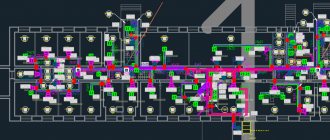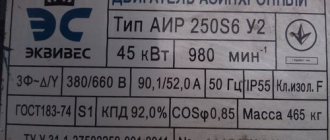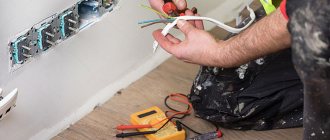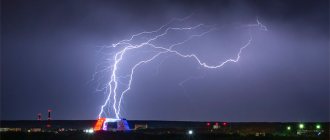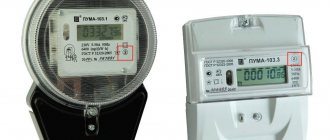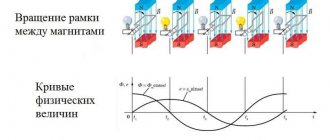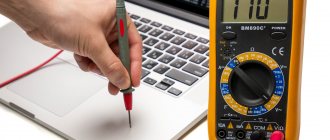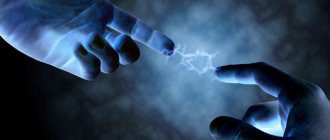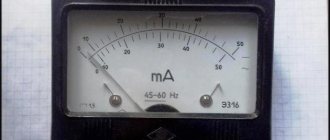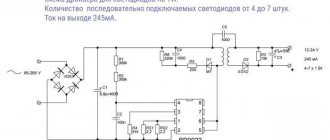From turning on the light switch and turning on the phone to heating up snacks in the microwave, the everyday activities we take for granted use an important source of energy: electricity. Now when you stop and think about it, you may wonder how this power comes into your home after it has been generated. As we'll outline here, the electricity we take for granted travels a long way from the power plant to your home. So here's how it's delivered to you...
Australia's electricity grid
Australia's electrical network covers more than 4,500 kilometers, and that's just in the eastern and southern states. Western Australia, the Northern Territory and Mt Isa in Queensland have individual transmission and distribution networks. With more than 40,000 km of power lines, the core electrical network includes transmission and distribution elements that provide transportation over vast distances to your home. Australia's power grid is relatively efficient, with an average of 5% of electricity lost during transmission and distribution. This is a relatively low figure compared to loss rates in other countries.
Power plants
Electricity begins its life at a power plant. Power plants are huge power plants, often located near energy sources such as gas power plants, hydroelectric dams, solar or wind farms that produce electricity. Depending on the type of fuel or source of energy consumed - be it coal, solar, wind or even nuclear power plants - they may have components such as a furnace, boiler, turbine, cooling towers and generators. These types of components are required for the generation process.
Once electricity is generated, it leaves the power plant via overhead lines to large substations. At this stage, the electricity can reach 25,000 volts or even higher.
How safe is nuclear energy?
Cooling pond at NV NPP
When properly operated, a nuclear power plant is completely safe. The radiation background in a 30 km zone around the Novoronezh Nuclear Power Plant is monitored by 20 automatic posts. They operate in continuous measurement mode. In the entire history of the station's operation, background radiation has never exceeded natural background values. But nuclear energy has potential dangers. Therefore, every year safety systems at nuclear power plants become more and more advanced. If for the first generations of nuclear power plants (1.2 power units) the main safety systems were active, that is, they had to be started by a person or automation, then when designing generation 3+ units (6th and 7th power units of the Novovoronezh NPP), the main emphasis is placed on passive safety systems. In the event of a potentially dangerous situation, they will work themselves, obeying not a person or automation, but the laws of physics. For example, when there is a blackout at a nuclear power plant, the protective organs, under the influence of gravity, will spontaneously fall into the core and shut down the reactor.
Nuclear plant personnel regularly train to cope with various types of emergencies. Emergency situations are simulated on special full-scale simulators - computerized devices that are outwardly indistinguishable from control panels. The operating personnel managing the reactor receives a license from Rostekhnadzor every 5 years for the right to conduct the technological process (control the NPP unit). The procedure is similar to obtaining a driver's license. The specialist passes theoretical exams and demonstrates practical skills on a simulator. Only having a license and passing NPP exams are personnel allowed to operate the reactor.
As an advertisement.
First substation transformer
Substations are usually located near power plants. Substations play an important role in the transmission of electricity: they further increase the voltage, allowing it to be transmitted over long distances without losing too much power. Substations do this with the help of transformers, and they can be used to increase or decrease the voltage of electrical currents. Reducing the voltage of electricity can be important in distribution substations because it needs to be made less powerful and safer before it reaches your home.
Once it passes through the first substation transformer, your electricity will enter the transmission networks.
Slide captions:
Where does electricity come into our home? Khrycheva T.P.
RIDDLE It will blink, blink, dive into the bubble, into the bubble under the ceiling - It’s daylight in the room at night!
What did people use in ancient times to make it light?
In ancient times, people had only the fire of a fire to shine at night.
Over time, people realized that if you put a stick in a fire, it would light up. This is how the torch appeared.
Later, smaller sticks called torches began to be used in houses. They placed the torches on a special stand - light.
Over time, people began to pour oil into a small bowl, put a thread wick in it and set it on fire. This is how oil lamps came into being.
And even later, people came up with a candle.
One day, a smart man invented an electric light bulb. It burns brightly, comfortably and safely.
What makes a light bulb work? I run along the paths, I can’t live without a path. Where am I, guys, no light in the house? To distant villages, cities Who is walking on the wires? Serene Majesty This
Electric charges in nature
Electric current is a flow of tiny charged particles - electrons. It is similar to a river, only water flows in the river, and electrons flow through the wires. Electric current is produced by large power plants.
Electric current first flows through thick high-voltage wires, then through ordinary wires it flows into our apartments, ending up in switches and sockets.
How does electricity help us? Divide into 2 groups
REMEMBER THE RULES! When you leave home, turn off the lights and electrical appliances!
Transmission networks
Transmission networks help move electricity from power plants to distribution networks to facilitate delivery to households, businesses and other end users. At this stage, the electricity remains at high voltage because it still has to travel vast distances.
Transmission networks consist of overhead lines on metal poles or lines buried in the ground. These lines are designed to carry extra high voltage and are insulated from the accidental transfer of electrical current to ground where it could be dangerous to people.
Second transformer substation
At the second point of the substation transformer, your electricity is reduced, again through the use of transformers to make it safe for use by households and end users. At this point, the electricity is considered to have reached the distribution network and left the transmission network.
Substation type and voltage may vary depending on use and location. For example, in rural areas smaller substations can be used to reduce the voltage to about 33,000 volts, making it suitable for powering trains and factories. In urban areas with factories, the voltage can vary from 11,000 to 33,000 volts to serve smaller factories. Contrast with delivery to homes, offices and businesses, where a nearby transformer may reduce the voltage to as little as 230 volts.
History of the invention of electricity
It would be wrong to say that one person discovered electricity. The idea itself existed for thousands of years, and then the era of scientific and commercial exploration began. Many great minds have worked on the question of the nature of electricity.
Thales of Miletus
Around 600 BC e. Greek mathematician Thales discovered that when fur rubs against amber, attraction arises between them. It turned out that it is caused by an imbalance of electrical charges, so-called static electricity.
William Gilbert
The English physicist wrote the book “De Magnete” in 1600. In it, the scientist explained the experiments conducted by Thales of Miletus. The phenomenon of static electricity, which the ancient researcher produced with the help of amber (in Greek 'electrum'), Gilbert called electric force.
This is how the English word electricity appeared. In addition, the scientist invented an electroscope that detected the presence of electrical charges on the body.
Charles Francois Dufay
At the beginning of the 17th century, a French scientist discovered two types of electricity. He called them glassy and resinous (in modern terminology - positive and negative charges). He discovered that objects with the same charges attract, and objects with opposite charges repel.
Benjamin Franklin
In the mid-18th century, Benjamin Franklin conducted numerous experiments studying the nature of electricity. In 1748, he managed to build an electric battery from glass sheets compressed with lead plates. The scientist discovered the principle of charge conservation. In the summer of 1752, Franklin conducted a famous experiment that proved that lightning is electricity.
Luigi Galvani
This Italian physicist and biologist took the lead in the discovery of the phenomenon of bioelectromagnetism. In 1780, he conducted experiments on frogs and found that electricity is the medium through which neurons transmit signals to muscles.
Alessandro Volta
This Italian physicist found that some chemical reactions are sources of direct electric current. He built an electric battery using copper and zinc to produce a continuous flow of electrical charges.
Volta introduced the concepts of electric potential (V) and charge (Q), and expressed the law of capacitance, later named after him. For this work, the unit of measurement of electric potential was named in his honor.
Hans Christian Oersted and Andre-Marie Ampère
At the beginning of the 19th century, Danish physicist Hans Christian Oersted discovered a direct connection between electricity and magnetism. He described how a compass needle is deflected by an electric current.
Inspired by this work, French physicist André-Marie Ampère compiled a formula to describe the magnetic forces that arise between objects carrying current. A unit of measurement of electric current was named in his honor.
Michael Faraday
This scientist:
- laid the foundation for the concept of the electromagnetic field;
- discovered that magnetism affects light rays;
- invented electromagnetic rotation devices.
In 1831, Faraday designed an electric dynamo in which rotary mechanical energy was continuously converted into electrical energy. This made it possible to produce electricity.
Thomas Edison
In 1879, a scientist invented a practical light bulb. Next, he set about developing a system that would provide people with a source of energy to power such lamps. In 1882, the first power station was built in London, which generated electricity and supplied it to people's homes.
A few months later, the first power plant appeared in New York, which supplied electricity to illuminate the lower part of Manhattan Island (85 consumers were able to light 5,000 lamps). It was direct current.
Nikola Tesla
Nikola Tesla at work: Flickr
Tesla is known for developing a new type of alternating current motor and electric power transmission technology. He patented an alternating current system to provide people with the highest quality electricity. Tesla's power systems spread to the United States and Europe, as they provided long-distance high-voltage transmission.
Heinrich Rudolf Hertz and Albert Einstein
Heinrich Hertz was engaged in experiments on the study of electromagnetic waves. In 1887, he described the photoelectric effect, where electrons are emitted (stripped from an atom) when electromagnetic radiation (such as light) hits a material.
In 1905, Albert Einstein published the law of photoelectric effects and hypothesized light energy quanta. Thus began the development of quantum mechanics and the creation of solar cells.
Since electricity is necessary for humanity, research in this area continues today. We cannot imagine life without electric current, and scientists are in search of new sources of it.
Original article: https://www.nur.kz/family/school/1912747-chto-takoe-elektrichestvo-i-kto-ego-izobrel/
Your house
Your electricity passes through the service and is recorded on your meter. The meter keeps track of how much electricity you use. At your distribution panel, your electricity is divided into circuits for each area of your home. Finally, the electricity travels through wires behind your walls to outlets and switches where you control your lights and appliances.
It's easy to take the electricity used to light your home for granted, but this precious source of energy has traveled a long way through complex generation and transmission infrastructure to get to your home. Knowing this, you may be less likely to take electricity for granted the next time you turn on the lights or turn on the TV.
Click Energy is a leading energy company and we're helping Australian households save more on their energy bills through our 100% online service model. Find out more about our simple, straightforward plans here or go and save online today.
